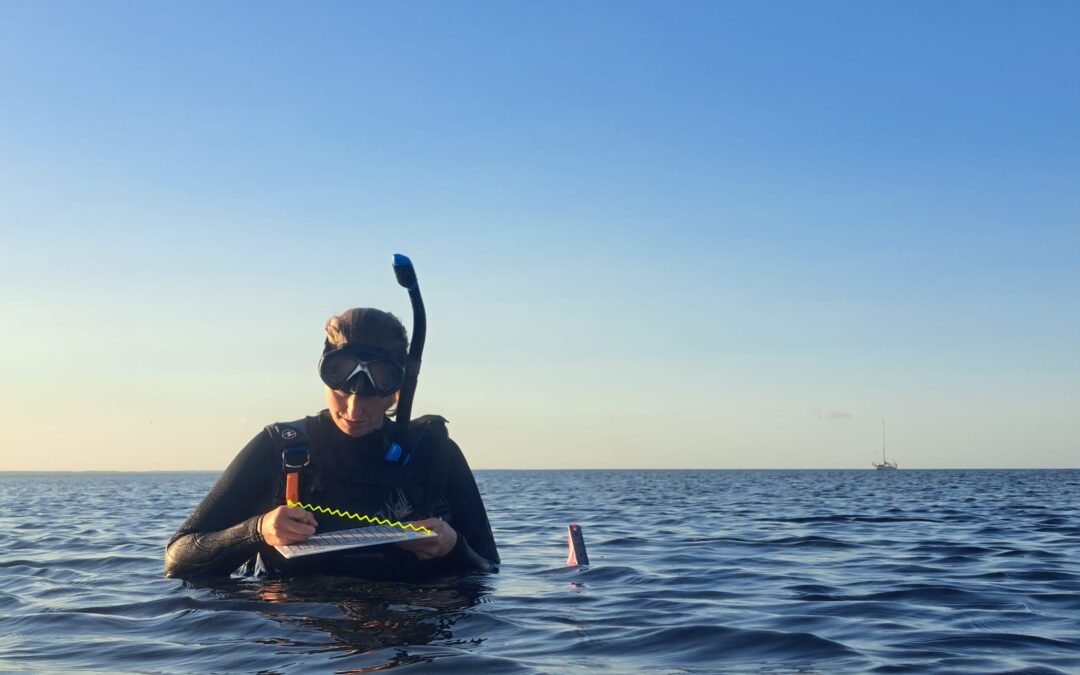Called “the forgotten ecosystem” by the UN Environment Programme, seagrass beds cover 0.2 percent of the ocean floor, yet account for 10 percent of the ocean’s carbon sequestration. As biodiversity hotspots, seagrass beds also account for 25 percent of the world’s fisheries production, providing food, shelter, and nurseries for small animals. In addition, like coral reefs, salt marshes, and mangrove forests, seagrass meadows filter coastal waters of nutrients, sediments, and contaminants.
Coinciding with World Seagrass Day on March 1st, the Center for Coastal Studies recently expanded its efforts to study this vital ecosystem. The Center’s seagrass expert, Agnes Mittermayr, Ph.D., has been named the new director of SeagrassNet, a global ecological program that monitors the health of seagrass ecosystems and the threats they face.
SeagrassNet is a digital research database as well as an archive of physical samples of seagrass, which are underwater flowering plants, from around the world. Since its founding in 2001, SeagrassNet has worked with research partners and volunteers to collect seagrass samples according to a strict monitoring protocol. The database consists of more than 100,000 on-the-ground observations made at 122 sites in 33 countries.
Mittermayr, who has studied seagrass on Cape Cod since joining the Center for Coastal Studies in 2015, is taking over the leadership of the program from Dr. Frederick Short of the University of New Hampshire’s College of Life Sciences and Agriculture, who is retiring.
One of Mittermayr’s goals is to reinvigorate the international cohort of researchers who contribute to the database. Those research efforts, she said, were stalled due to Covid. She hopes to rebuild the network and to train and attract additional researchers in new places.
“I’ve gotten some encouraging feedback from as far as China, Brazil, Thailand and Australia,” she said.
Mittermayr also plans to update SeagrassNet’s website to allow researchers to easily upload and download data. “It’s incredibly important if you’re interested in climate change research. By downloading historical data, you can follow trends over time at any of the SeagrassNet locations,” said Mittermayr.
The SeagrassNet program also includes a collection of physical samples dating back more than 30 years. These samples, now stored at the Center for Coastal Studies, consist of dried seagrass biomass and sediment.
The archive is a rare one. Proper storage is expensive, so over the years, prior to advances in genetic testing, many museums discarded their seagrass samples, on the assumption that there was nothing more to do with them.
“Now, with advances in DNA technology, we see much more value,” explained Mittermayr.
Physical samples from the archive can now be subjected to genetic analysis to better understand how plants evolve during climate change. Conservationists can then apply a process called assisted gene flow to restore seagrass beds.
Through her new role with SeagrassNet, Mittermayr hopes to raise awareness of the importance of seagrass, and activate conservation efforts. The first goal of conservation, she explained, is awareness.
Mittermayr asked, “if people don’t know what it is, why should they care about it?”
“Seagrass is an important ally in the fight against climate change, and here on Cape Cod, seagrass plays an important role in slowing erosion. The more we know about seagrasses the better we can restore and protect this vital ecosystem,” she said.
PHOTO AT TOP: Agnes Mittermayr, Ph.D. conducts research on seagrass in Cape Cod Bay, photo by Sara Boswell.
Read more about the research being conducted by Agnes Mittermayr.




